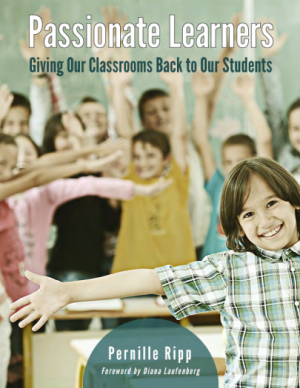The excerpt below is from the book “Passionate Learners: Giving Our Classrooms Back to Our Students,” by Pernille Ripp. This excerpt is from the chapter entitled “When Change Happens to Good Teachers."
Four years ago, I realized that I needed to take responsibility for the damage I had done to students who came into my room loving (or at least liking) school and left diminished in some ways. Those kids who loved math until my long-winded lectures about process left them confused and bitter. Those kids that loved to read until my strict book report guidelines and reading logs devoured their curiosity for great stories.
I had to take responsibility for what I had done. There was no one else to blame. Just as important, I had to make sure that my future students would leave our classroom still loving school, with passionate curiosity, not afraid to try something new.
How do we make children hate school so much? I now teach 5th grade, and by the time they reach me, certain subjects have already landed on their top 10 list of most dreadful things to do. Math tends to top the chart, but social studies usually is close behind, and some even hate reading (but may read many books outside of school). Most students confess a love of recess, art, music, and sometimes even science. PE is always a crowd favorite as well. But math and social studies, yikes.
I don’t blame the students. The system of school has taught them to feel this way. How dare I say this? Because I was that system. I think about math and how I taught it: drill and kill, lecture and lecture some more. Show them repeatedly how to do a problem, then have one or two students come up and work through a similar problem while the rest of the class watches (eyes glazing over). And finally have them practice it on their own, usually through homework. In my straight-edged classroom, students were not allowed to work ahead — they needed to pay attention to me slogging through all of the pages. We did not have much time for discussion, let alone any further exploration.



